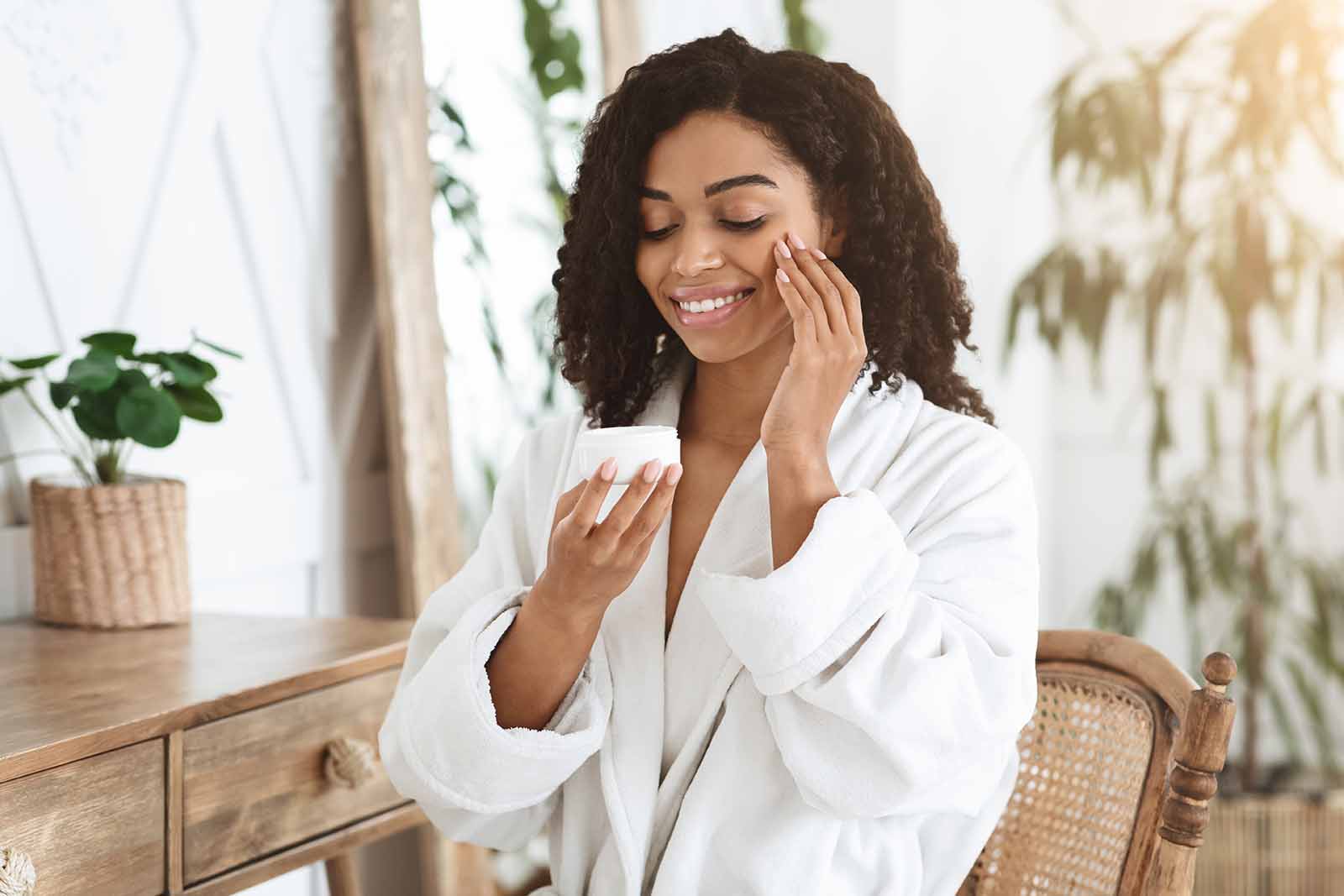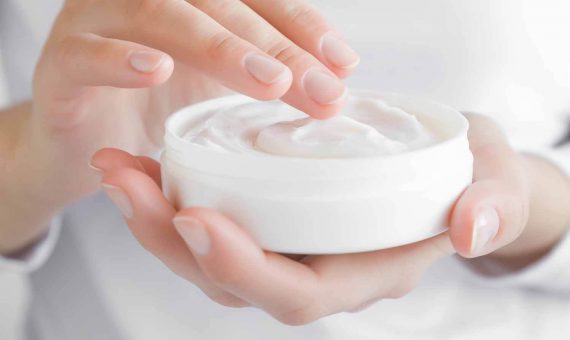Currently Empty: $0.00
Can turmeric be used topically on the skin?
How often do you raid your kitchen pantry for the newest and best skincare item? You likely do not spend a great deal of time combing your pantry shelves for a new skincare regimen. However, some herbs can be extremely beneficial to the overall health of your skin, and not just in cooking.
Turmeric is a lesser-known herb that is being used more frequently as a topical application to help improve the appearance and health of the skin. This herb has been praised for it is healing abilities for many different ailments, which makes it no different when it comes to skincare.
You may not consider this bright-yellow herb as something to use on your skin, but it is fantastic for helping with several skin issues – from acne to dark undereye circles. In this article, you will learn about the benefits associated with using turmeric on your skin, as well as how it can absorb into your skin for the best results.
Can Turmeric be Used Topically on The Skin?
Turmeric is a bright yellow powder that stains anything it meets, which is enough to make you question using it on your skin. The last thing you want is to turn your face a lovely shade of yellow.
When using turmeric on your face, you will need to mix it with other ingredients such as yogurt, milk, or honey. When you mix the powder with other ingredients, it takes away some of the ability to stain your skin. It is not recommended to apply a paste of only turmeric to your skin because you will likely end up with golden skin, not just a healthy glow.
Five Benefits of Using Turmeric on The Skin
When used internally, turmeric has been found to have many positive benefits; however, some benefits can be experienced without ingesting the herb.
Five of the most common skin benefits that turmeric can offer you are:
- Brighten your skin
- Fight acne
- Fight bags and dark circles
- Treat psoriasis
- Protect against aging
Brighten Your Skin
Skin brightening does not mean making your skin lighter in color. Skin brightening products help to eliminate the dead skin cells that can cause your skin to look dull and tired. Turmeric is full of antioxidants that are known to help exfoliate the skin naturally.
Exfoliation helps bring fresh new cells to the surface. When using turmeric to brighten your skin, it is recommended to use a mixture of honey, milk, and turmeric. You should leave the mixture on your face for 25 minutes before being washed off. This process can be repeated several times a week until optimal results are obtained. (Source: Food NDTV)
Fight Acne
Many people have been there; your skin looks amazing one day, and suddenly, red bumps begin to appear, and you are in the middle of a monumental breakout, which will likely occur at the most inopportune time.
Turmeric has been proven to help fight acne because of its anti-inflammatory and antiseptic properties. To strengthen the impact turmeric has on acne, you may wish to add it to apple cider vinegar or honey. If you are making a mask, you can use apple cider vinegar. But if you have a pesky spot that needs to be treated, mix turmeric with honey to create a paste for spots. (Source: Best Health Mag)
Fight Bags and Dark Circles
Have you ever looked in the mirror only to see eyes that could not look heavier and more raccoon-like if they tried? If you answered yes, you are not alone. Even just a couple of restless nights will show up in your mirror. While this is an unpleasant surprise, turmeric may be able to help you combat the exhausted look once and for all.
Remember, turmeric is a natural anti-inflammatory. Therefore, when it is applied to the eye area, it can help to relieve some of the inflammation you are experiencing. When applying turmeric around your delicate eye area, you need to use caution to avoid getting it into your eyes.
The best way to treat undereye circles and bags with turmeric is to create a paste by mixing turmeric powder and buttermilk. After the mixture is made, apply it to your undereye area and let it work its magic. (Source: Byrdie)
Treat Psoriasis
If you have ever had experience dealing with the itchy skin disease referred to as psoriasis, you would understand the need to find relief in any place possible. Psoriasis causes significant inflammation in the skin, which leads to terrible itching. Luckily for those who suffer from this autoimmune disorder, turmeric may be able to offer some relief.
While turmeric may not be able to remove the inflammation entirely, it can help lessen the effects of the inflammation, thereby bringing significant comfort to the individual.
When using turmeric to treat psoriasis, it is important to apply it correctly so that you do not cause further irritation. Simply make a paste with turmeric and water to apply to the affected areas. Be sure to cover the area with a patch or cloth to make sure you do not stain your bedding or clothing. This remedy works best when left on overnight. (Source: Greatest)
Protect Against Aging
Who does not wish they could turn back the hands of time with a simple DIY remedy that can be made with items already in your pantry? It is doubtful that many people would shake their heads at this notion; you are likely heading to your pantry right now to see if you have the magical ingredients.
Turmeric is not a fountain of youth, and it will not instantly return your skin to its teen years (minus the acne, of course); however, it can lessen the effects of aging. Two methods can be used. The first involves consuming turmeric while the other involves placing it directly on your skin. Aging can come in many forms when it relates to the skin, so there are specific methods to deal with each.
- For fine lines and wrinkles: It is recommended that turmeric powder be mixed with rice flour and tomato juice and applied to the skin. This will help to firm the skin and eliminate the fine lines and wrinkles that tend to appear over time.
- For visible signs of aging: To help the overall appearance of aging skin, mixing gram flour with turmeric powder can create a powerful exfoliant.
Before applying any turmeric to your face, it would be wise to do a spot test to ensure you do not have any allergies to the paste mixture.
As you can see, there are many different benefits when it comes to using turmeric on the skin. While most are related to the face, there are some skin ailments such as psoriasis that can be alleviated with the use of turmeric paste. (Source: The Life Co)
Is Turmeric Absorbed Through the Skin?
There are many benefits of turmeric, and you know that the ingestion of turmeric has shown to improve several physical ailments. The skin is the largest organ of the human body. Skin is extremely porous and is, therefore, able to absorb a lot of different products (and chemicals), which may make you wonder if the skin absorbs turmeric.
Anything you put on your skin can be absorbed to some degree. Turmeric is no different. In fact, there are certain times when a topical application of turmeric would be the preferred method of treatment over ingestion simply because of the speed at which it can be absorbed.
Another good option for your skin to absorb turmeric is: turmeric bath salts. The benefits of bath salts are great for your skin and when combined with turmeric it can create an amazing combination for the skin.
When looking at the absorption of turmeric, you need to understand the factors that determine the amount of absorption that can and will likely occur:
- Location of application: The human body is covered with skin, but it is not all the same thickness. If you have ever gotten a tattoo, you know certain areas are more “painful” because of the skin thickness. If you apply the turmeric to an area where the skin is thicker or denser, the absorption rate will be slower. A slower rate of absorption will impact the time it takes to see results.
- Length of application: The length of time you leave a turmeric treatment on your skin will have a direct impact on the rate of absorption. If an application is left for 25 minutes, the absorption of the turmeric will likely be much less than an application that is left overnight.
- Concentration of mixture: When making any mask or paste with turmeric, the ratio of turmeric to other ingredients is usually relatively equal; however, some have increased amounts of turmeric. If you are applying a high concentration to the skin, the absorption of the turmeric will be increased, simply because there is a greater concentration of the herb.
- Amount of area covered: If you are using turmeric as a spot treatment for acne, the absorption rate is going to be much lower than if you are covering a large portion of your body that is affected by psoriasis. More area covered equals higher absorption rates.
(Source: Turmeric for Health)
Turmeric Stains on Skin
If you are ready to begin your experimentation with turmeric for your skincare routine, you need to have some tricks up your sleeve to remove the color that may be left behind. As you know, turmeric is a bright yellow color that is capable of staining anything it meets. Your skin is no exception when it comes to staining.
If you happen to notice the appearance of stains after you have removed an application, there are a couple of ways to get rid of the stain. It is important that you not grab the washcloth and begin scrubbing, as this could cause damage to your skin.
Two ways that you can remove turmeric stains from your skin are:
- Use a mixture of lemon juice and sugar scrub. Apply the mixture with a gentle scrubbing motion and rinse when finished.
- Massage olive oil or coconut oil into your skin and wipe it away. The oil may be able to help break down the color left behind from the turmeric.
(Source: The Beauty Gypsy)
Final Thoughts
Turmeric can provide a goldmine of skin benefits if it is used properly. The anti-inflammatory and antiseptic properties make it ideal for treating acne or other skin irritations.
If you are ingesting it, you may want to know how much turmeric to take each day and learn about other beneficial combinations such as CBD and Turmeric.
When beginning to use Turmeric you need to use caution. Introducing any herb or supplement into your daily routine can cause the risk of potential allergies.
While using turmeric can be a safe and inexpensive way to make your skin look renewed, always do a spot test first. Likely, you will not suffer any reactions, and you will be on your way to glowing, healthy skin!





